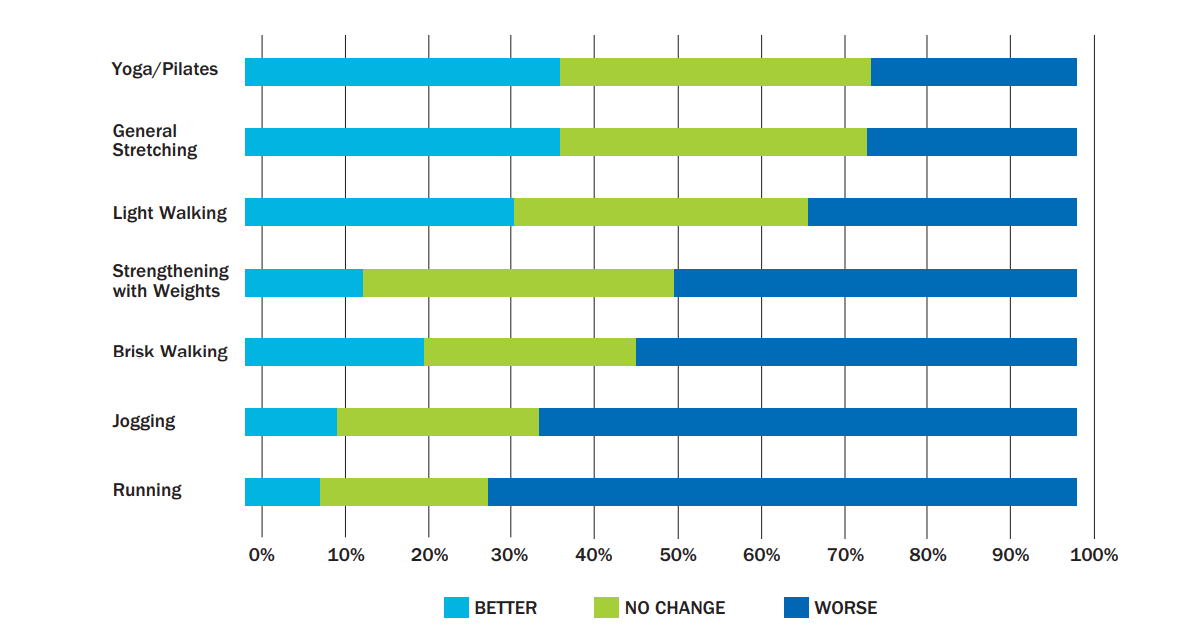The benefits of exercise and physical activity for neurological disorders is well-known. A team of exercise scientists and physical therapy experts at University of Auckland in New Zealand conducted a survey of 260 dystonia patients about physical activity and barriers to exercise. The survey revealed that lower intensity exercise, such as light walking and general stretching, were among the least aggravating for dystonia symptoms.
This table shows the percentage of survey participants who answered ‘better’ (bright blue), ‘no change’ (green), and ‘worse’ (dark blue) for each activity. Higher impact exercise tended to worsen dystonia, while low impact exercise may be beneficial, or at least not aggravating, for two-thirds of dystonia patients.

McCambridge A, Meiring RM, Bradnam LV (2019) Physical activity, sedentary behavior, and barriers to exercise in people living with dystonia. Front Neurol 10:1121
Bradnam, L.V., Meiring, R.M., Boyce, M. et al. Neurorehabilitation in dystonia: a holistic perspective. J Neural Transm (2020).
For tips on increasing physical activity visit: www.dystonia-foundation.org/benefits-of-exercise/
Used with permission from Dystonia Dialogue, Summer 2021. Vol 44 – No. 2
